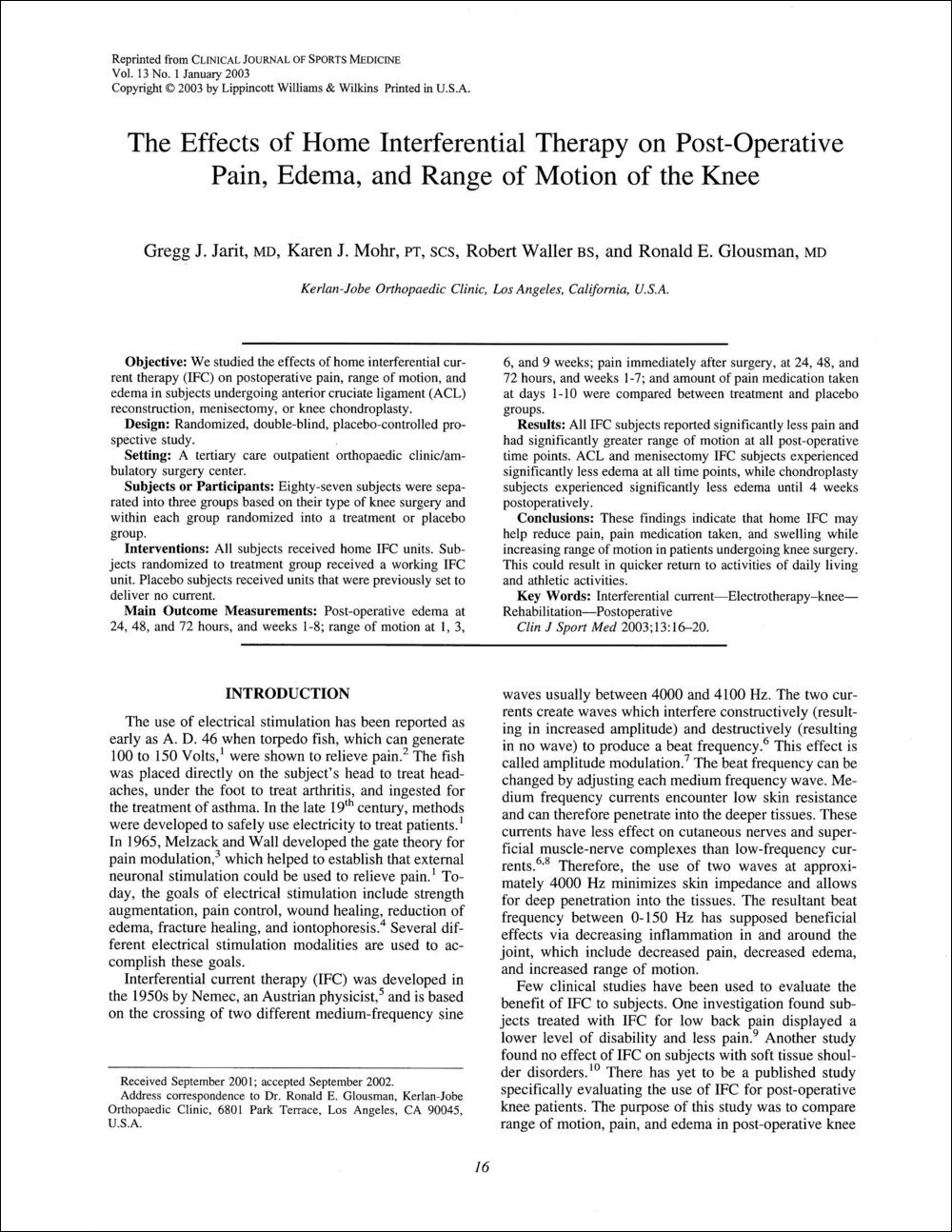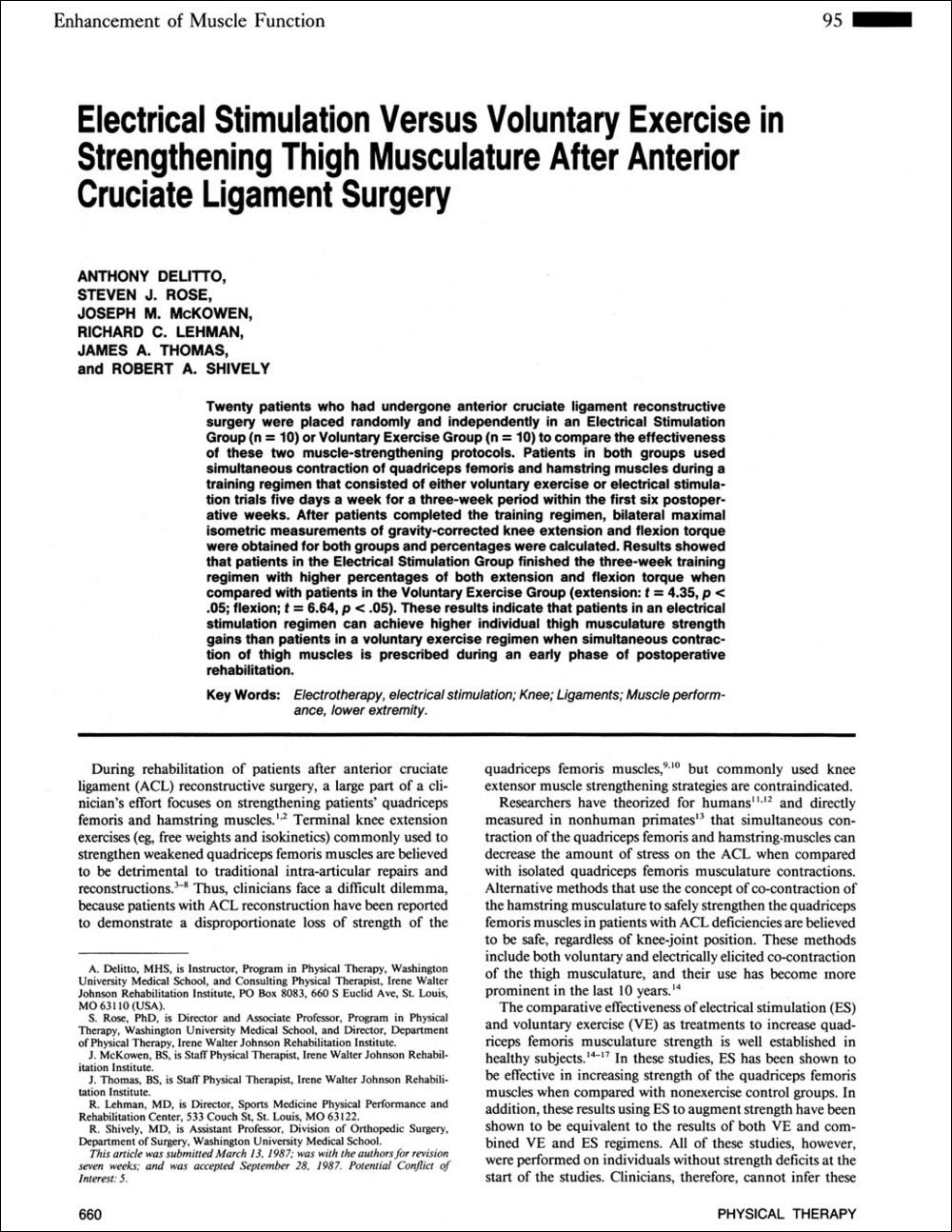
Transcutaneous Electrical Nerve Stimulation for the Long-Term Treatment of Ocular Pain
Abstract
Purpose: Ocular pain is a debilitating condition that is challenging to treat as therapies that target the ocular surface are often ineffective. We previously reported a short-term reduction in ocular pain after one periocular transcutaneous electrical nerve stimulation (TENS) session. The current study aims to elucidate the long-term effect of TENS on ocular pain.
Materials and Methods: Fourteen individuals with eye pain were identified as candidates for a TENS device (RS Medical, Vancouver) for home use after a successful trial in clinic between February 2018 and July 2019 at the Miami Veterans Administration Hospital or University of Miami. Ten of the 14 patients were included in this retrospective review, based on the inclusion of receiving and using the device for a minimum of three months. The median age of the ten patients was 47.5 years, range 32–73 years, and eight were male. The main outcome measures were 1) frequency of long-term integration of TENS into ocular pain management and 2) patient reported ocular pain intensity (0-10) pre- vs. post-treatment.
Results: Patients reported an initial median use of the device 14.0 times per week and over time reducing the frequency to 3.0 times per week. All reported that the TENS unit was successfully incorporated into their ocular pain management routine for at least three months (median duration of use 6.5 months, range 3–14 months). Nine of ten patients reported subjective pain reduction with use of the TENS device at home. Overall, pain intensity decreased by approximately 27.4% (mean rank = 5.6, Z = −2.1, p = 0.02) post- vs. pre-treatment. No adverse events associated with TENS were reported in any patient.
Conclusion: Our preliminary data suggest that TENS can be integrated into the long-term management of ocular pain with improvements in overall pain intensity.

A comparison of true and premodulated interferential currents
Abstract
To compare true and premodulated interferential currents (IFCs) in terms of sensory, motor, and pain thresholds; maximum electrically induced torque (MEIT); and comfort.
Interventions: Participants were exposed to 4 different conditions, chosen to evaluate 2 fundamental differences between true and premodulated IFCs. The conditions were different combinations of (1) premodulated or constant-amplitude currents applied at the skin and (2) crossed or parallel current paths.
Main outcome measures: Sensory, motor, and pain thresholds; MEIT; and subjective reports of relative discomfort were recorded for each of the 4 conditions. Motor to sensory threshold ratios were subsequently calculated to assess depth efficiency of stimulation.
Results: The major findings were that crossed currents (true IFC) had no advantage over parallel currents (premodulated IFC) in terms of motor to sensory threshold ratio, MEIT, or comfort, and that premodulated currents produced higher torque values and less discomfort than constant-amplitude currents (true IFC). These results contradict the claimed superiority of true IFC.
Conclusions: The findings indicate that premodulated IFC, delivered via 2 large electrodes, may be clinically more effective than the traditional true IFC arrangement in terms of depth efficiency, torque production, and patient comfort.

The Effects of Home Interferential Therapy on Post-Operative Pain, Edema, and Range of Motion of the Knee
Abstract
We studied the effects of home interferential current therapy (IFC) on postoperative pain, range of motion, and edema in subjects undergoing anterior cruciate ligament (ACL) reconstruction, menisectomy, or knee chondroplasty. Randomized, double-blind, placebo-controlled prospective study. A tertiary care outpatient orthopaedic clinic/ambulatory surgery center. SUBJECTS OR PARTICIPANTS: Eighty-seven subjects were separated into three groups based on their type of knee surgery and within each group randomized into a treatment or placebo group. All subjects received home IFC units. Subjects randomized to treatment group received a working IFC unit. Placebo subjects received units that were previously set to deliver no current. Post-operative edema at 24, 48, and 72 hours, and weeks 1-8; range of motion at 1, 3, 6, and 9 weeks; pain immediately after surgery, at 24, 48, and 72 hours, and weeks 1-7; and amount of pain medication taken at days 1-10 were compared between treatment and placebo groups. All IFC subjects reported significantly less pain and had significantly greater range of motion at all post-operative time points. ACL and menisectomy IFC subjects experienced significantly less edema at all time points, while chondroplasty subjects experienced significantly less edema until 4 weeks postoperatively. These findings indicate that home IFC may help reduce pain, pain medication taken, and swelling while increasing range of motion in patients undergoing knee surgery. This could result in quicker return to activities of daily living and athletic activities.

Electrical muscle stimulation as an adjunct to exercise therapy in the treatment of nonacute low back pain: a randomized trial
Abstract
A prospective, randomized, double-blind, placebo-controlled clinical trial was performed to investigate the efficacy of electrical muscle stimulation when combined with a therapist-guided, standardized exercise therapy program in the treatment of non-acute low back pain.
Eighty patients with low back pain of at least 6 weeks' duration were randomized into the following 2 groups: standardized exercise therapy with functional electrical muscle stimulation or standardized exercise therapy with placebo electrical stimulation. Subjects were evaluated at baseline, 2 months, and 6 months with a standardized back pain questionnaire and objective measurements of lumbar spine function. Exercise therapy was continued for 6 months, but electrical stimulation was discontinued at the 2-month interval. Of the 80 patients initially enrolled, 42 discontinued or withdrew before completing the entire study protocol. At the 2-month follow-up interval, subjects in the treatment group had statistically significantly improved lumbar spine function compared with the control subjects. This effect continued during the last 4 months of the study after electrical stimulation had been discontinued. This suggests that electrical muscle stimulation can be an effective adjunctive treatment modality for non-acute low back pain. The effects of this combined therapy seem to last beyond the duration of electrical stimulation treatment.

Effect of sequential electrical surface stimulation on medication following SED™: Initial evaluation
Abstract
To evaluate the effect of Sequential Electrical Surface Stimulation on medication utilization in patients who have undergone multilevel Selective Endoscopic Discectomy.

Electrical Stimulation Versus Voluntary Exercise in Strengthening Thigh Musculature After Anterior Cruciate Ligament Surgery
Abstract
Twenty patients who had undergone anterior cruciate ligament reconstructive surgery were placed randomly and independently in an Electrical Stimulation Group (n = 10) or Voluntary Exercise Group (n = 10) to compare the effectiveness of these two muscle-strengthening protocols. Patients in both groups used simultaneous contraction of quadriceps femoris and hamstring muscles during a training regimen that consisted of either voluntary exercise or electrical stimulation trials five days a week for a three-week period within the first six postoperative weeks. After patients completed the training regimen, bilateral maximal isometric measurements of gravity-corrected knee extension and flexion torque were obtained for both groups and percentages were calculated. Results showed that patients in the Electrical Stimulation Group finished the three-week training regimen with higher percentages of both extension and flexion torque when compared with patients in the Voluntary Exercise Group (extension: t = 4.35, p < .05; flexion; t = 6.64, p < .05). These results indicate that patients in an electrical stimulation regimen can achieve higher individual thigh musculature strength gains than patients in a voluntary exercise regimen when simultaneous contraction of thigh muscles is prescribed during an early phase of postoperative rehabilitation.

Improvement in Isometric Strength of the Quadriceps Femoris Muscle After Training with Electrical Stimulation
Abstract
The purpose of this investigation was to determine if training isometrically with electrical stimulation (ES) alone would significantly increase isometric strength of the quadriceps femoris muscle. The relationships between the strength changes and the relative force and duration of training contractions were also studied. An experimental group (Group 1) and a control group (Group 2), 12 subjects in each, underwent pretesting and posttesting to obtain their maximum voluntary isometric contractions (MVICs). Group 1 trained with maximally tolerable isometric contractions induced by ES, three days a week for four weeks. Results showed that although both groups demonstrated increases in isometric strength of their quadriceps femoris muscles, training isometrically with ES produced a significantly greater increase (p < .01) than not training with ES. The relative strength improvement in Group 1 was positively and significantly correlated with training-contraction intensity and duration. The relative increase in isometric strength, using only ES, may be determined by the ability of the subjects to tolerate longer and more forceful contractions. Suggestions for further research and implications for the clinical use of ES for strength-training are discussed.

Strength changes in the normal quadriceps femoris muscle as a result of electrical stimulation.
Abstract
The purpose of this study was to examine the effectiveness of an electronic muscle stimulator in strengthening normal quadriceps femoris muscle without the assistance of simultaneous isometric muscle contraction. The sample consisted of 58 subjects who were randomly divided into three independent groups. One group (n = 19) served as controls; one group (n = 20) underwent daily stimulation of the right quadriceps femoris muscle using a specified protocol; and one group (n = 19) underwent isometric strengthening of the quadriceps femoris muscle using a specified protocol. The mechanical force of isometric quadriceps femoris muscle contraction was recorded weekly for the three groups, and the initial and final values were subjected to an analysis of covariance. The electrical-stimulation and isometric-exercise groups had statistically significant increases in quadriceps femoris muscle torque when compared with the nonexercised controls (p less than .001). The data supported the use of this electronic stimulator as an appropriate device for strengthening skeletal muscle without voluntary effort.

The influence of naloxone on analgesia produced by peripheral conditioning stimulation
Abstract
Conditioning electrical stimulation of peripheral nerves is presently routinely employed for alleviation of chronic pain in humans. Most commonly, high frequency stimulation of probably mainly coarse myelinated afferents from the skin is used as proposed in the gate theory of Melzack and Wall25. However, only a limited number of patients benefit from such stimulation. To improve the results of such treatment we have developed a kind of acupuncture-like electrical stimulation where mixed nerves are stimulated with short trains of stimuli given at a slow repetition rate via surface electrodes to elicit muscle contractions. The compiled results of conditioning stimulation for analgesia were then markedly improved.
To see whether the analgesia experienced by the chronic pain patients is mediated via links utilizing endorphins, the opiate antagonist naloxone was administered to these patients under double-blind conditions, saline being used as a placebo. We then found that 6 out of 10 patients receiving acupuncture-like stimulation but none out of 10 patients receiving high frequency stimulation of skin nerves, reported an inhibition of the stimulation-produced analgesia by naloxone. This indicates that the analgesia produced by acupuncture-like stimulation is mediated via mechanisms utilizing endorphins whereas the analgesia produced from high frequency stimulation of coarse cutaneous afferents is mediated via some other mechanism.









